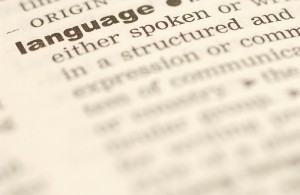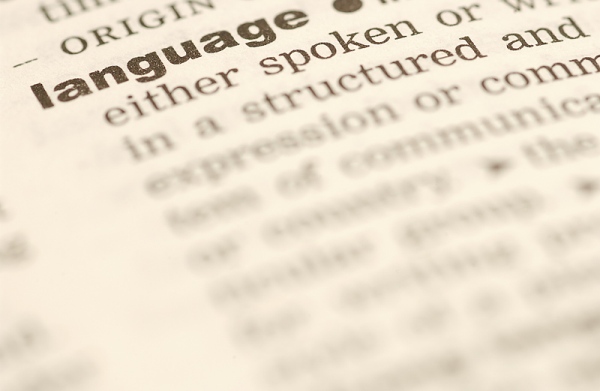By Martin Surridge – [dc]W[/dc]hen you include my time spent as a student, a student-teacher, and as an academy English educator, I spent a total of fourteen years in Seventh-day Adventist schooling. Though now, after getting married last summer and moving back across the country from Georgia to Washington State, I am back where I began my education: the public school system. When I accepted a position as a ninth and tenth-grade English teacher a little ways north of Seattle, the principal of my new public high school asked me quite good-naturedly, “Now, you won’t have a problem coming from Christian school, teaching in the public system?” I explained to her that of course I would be very respectful and professional and that I anticipated no problems, which has been true.  I’m nearly certain that during no time in my classes have I ever blurred the boundary of separation between church and state, and I’m always very careful when answering students’ questions and informing them of religious themes and terms in literature. It can be a tricky balancing act, since there’s a legitimate amount of Judeo-Christian values in high school literature that can be hard to avoid at times. Trying to teach Nathaniel Hawthorne’s The Scarlet Letter or Elie Wiesel’s Night from a secular perspective was a little challenging, reminding myself to instruct of religion and not with religion. I also caught myself missing the ability to pray with a troubled student or pray at the beginning of each class period as I had done for several years as an academy teacher. Public school teachers, I had been told during my graduate classes at Walla Walla University, often envy Christian school teachers for their chance to quiet the class down at the start of a period with a well-timed, thematic opening prayer. I now understood where they were coming from. However, all of these changes have probably helped me rather than hurt me. They’re definitely making me more aware of my teaching style and methods. They’re also making me think more about my spirituality and what Christianity and a relationship with God means when it’s not clearly on display to my students. It was easy to be Christian in an Adventist school; no one assumed otherwise. One simply needed to pray, show up to worship, and occasionally volunteer to speak for children’s story. It didn’t require much of me. Although looking back I remember a teacher evaluation where many students gave me a relatively poor score in one category, something along the lines of “displaying Christ through classroom instruction.” It was a bit of a shock then but a rather telling moment for me today. Now, in public school, I have to think a lot more carefully about religion on a daily basis. While I’m not able to pray, I can still show kindness to others, and can still reach out to the unfortunate and help them as best as I can. Demonstrating a Christ-like attitude is something I strive to achieve more than ever before-though now, ironically, I’ll never be evaluated by it-and yet I still fail at it probably as frequently as ever. Too often I’ll forget to view a student in the best-possible light, fail to try my hardest to help a disadvantaged kid, or I’ll lack the strength to do what I know is right. My public school experience isn’t a nightmare like some movies make it out to be, but it’s often so much harder than Christian school. In just six months I’ve had to deal with runaways and juvenile offenders, with being flipped off and cussed out, with interventions, homeless students, and those with twenty-five unexcused absences, and at times I wish I could invoke the power of public prayer and of community worship, but I contently remain forever silent in these matters as I greatly appreciate our nation’s commitment to equality and freedom of religion. And one day, if I return to teach in a Christian school, I hope to bring this renewed sense of focus with me, not because I anticipate imitating Christ any better than anyone else, but simply because I’ll be able to better appreciate working in religious education and a Christ-centered environment.
I’m nearly certain that during no time in my classes have I ever blurred the boundary of separation between church and state, and I’m always very careful when answering students’ questions and informing them of religious themes and terms in literature. It can be a tricky balancing act, since there’s a legitimate amount of Judeo-Christian values in high school literature that can be hard to avoid at times. Trying to teach Nathaniel Hawthorne’s The Scarlet Letter or Elie Wiesel’s Night from a secular perspective was a little challenging, reminding myself to instruct of religion and not with religion. I also caught myself missing the ability to pray with a troubled student or pray at the beginning of each class period as I had done for several years as an academy teacher. Public school teachers, I had been told during my graduate classes at Walla Walla University, often envy Christian school teachers for their chance to quiet the class down at the start of a period with a well-timed, thematic opening prayer. I now understood where they were coming from. However, all of these changes have probably helped me rather than hurt me. They’re definitely making me more aware of my teaching style and methods. They’re also making me think more about my spirituality and what Christianity and a relationship with God means when it’s not clearly on display to my students. It was easy to be Christian in an Adventist school; no one assumed otherwise. One simply needed to pray, show up to worship, and occasionally volunteer to speak for children’s story. It didn’t require much of me. Although looking back I remember a teacher evaluation where many students gave me a relatively poor score in one category, something along the lines of “displaying Christ through classroom instruction.” It was a bit of a shock then but a rather telling moment for me today. Now, in public school, I have to think a lot more carefully about religion on a daily basis. While I’m not able to pray, I can still show kindness to others, and can still reach out to the unfortunate and help them as best as I can. Demonstrating a Christ-like attitude is something I strive to achieve more than ever before-though now, ironically, I’ll never be evaluated by it-and yet I still fail at it probably as frequently as ever. Too often I’ll forget to view a student in the best-possible light, fail to try my hardest to help a disadvantaged kid, or I’ll lack the strength to do what I know is right. My public school experience isn’t a nightmare like some movies make it out to be, but it’s often so much harder than Christian school. In just six months I’ve had to deal with runaways and juvenile offenders, with being flipped off and cussed out, with interventions, homeless students, and those with twenty-five unexcused absences, and at times I wish I could invoke the power of public prayer and of community worship, but I contently remain forever silent in these matters as I greatly appreciate our nation’s commitment to equality and freedom of religion. And one day, if I return to teach in a Christian school, I hope to bring this renewed sense of focus with me, not because I anticipate imitating Christ any better than anyone else, but simply because I’ll be able to better appreciate working in religious education and a Christ-centered environment.

